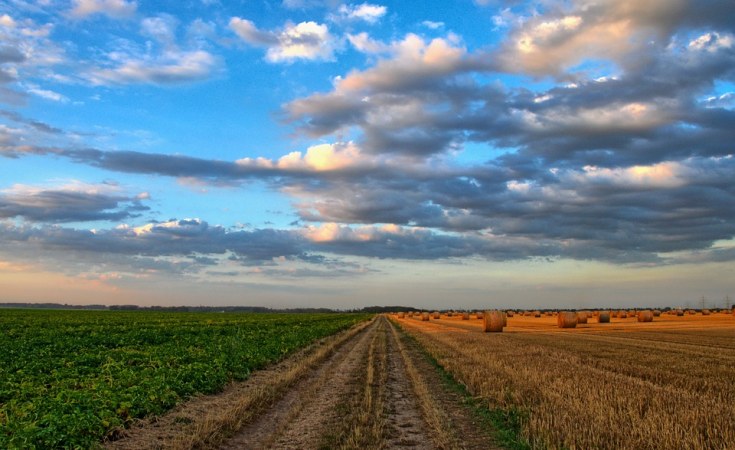In 2017, climate and man-made disasters sent shockwaves across the world.
For the first time in a decade, world hunger has also risen once more to affect an estimated 815 million people. Regions facing conflict in combination with the impact of droughts and floods fared the worst in parts of Africa and Asia.
This, coupled with the lingering impacts of the El Niño phenomenon in 2015, has resulted in sub-Saharan Africa becoming the only region where the number of undernourished people has consistently increased since the beginning of the decade. Currently, over 30 percent of children under five are stunted – the highest rate in the world.
But there are signs of hope from science. Across eastern and southern Africa, investments in research for development by the Australian Centre for Agriculture Research (ACIAR) through the SIMLESA program are reducing farmers' risks and increasing the yields of maize and legumes by three and four times.
SIMLESA is promoting conservation agriculture practices that can simultaneously reduce land degradation and labour costs, improve soil fertility, and increase farmers' capacity to adapt to climate variability and change. The secret to its success has been SIMLESA's efforts in helping over 235,000 poorly resourced and highly vulnerable farmers test more productive and resilient practices that best fit their own circumstance and investment capacity.
Increased yields and reducing risks
Purchasing a new seed, as opposed to planting a recycled seed saved from a previous harvest is another high-risk decision for farmers. In the case of Kenya, we found that on average, 31 percent of farmers were still planting seeds recycled from as long as eleven seasons ago. These yielded much less than newer, hybrid seeds now available.
As part of the SIMLESA solution to this complex problem, we implemented "innovation platforms". Farmers were supported to find solutions and link to other agricultural value chain actors. This improved farmers' access to inputs, to better suited agronomic practices, and improved access and participation in output markets.
As part of this exercise, farmers tested seeds from different varieties, selecting the plant types and grain qualities best suited their needs. Varieties included more drought-tolerant maize lines, various legume and fodder varieties grown using conservation agriculture practices, which have since been recommended for seed scale-up and commercial production.
Farmers have also supported to trial other agronomic improvements, such as optimizing seed and fertilizer rates. In Kenya, seed rates were found to be 47 percent of the recommended rates; while fertilizer was only being applied at 40 percent of the recommended rates. Crop protection chemicals were not used or wrongly used, and farmers usually did not apply phosphorus fertilizers to legumes such as beans.
Through discovering the value of investing in improved seed, fertilizers and agrochemicals, SIMLESA farmers achieved maize and bean yields of 4.5 and 2 tonnes per hectare respectively, compared to 1.6 tonnes per hectare and 0.5 tonnes per hectare among farmers not participating in the program. These new maize and bean yields mean that the risk of food insecurity was dramatically reduced among participating Kenyan farmers.
Feeding both the soil and the livestock
Continual farming and mono-cropping of maize, together with little use of fertilizers or manure dramatically reduced the fertility of Africa's fragile soils. Fragile soils, lead to fragile livelihoods and make farmers even more vulnerable to climate shocks. Farmers are accustomed to removing crop residues from their fields in order to feed their livestock, further aggravating erosion and soil fertility problems.
To address this problem, SIMLESA encouraged the adoption of a set of practices to build soil health. This included leaving either all or some crop residues on the field, reducing tillage and adding legume crops that fix nitrogen in rotations with cereal crops and forages.
By taking these steps to reduce erosion, we saw significant improvements in crop yields, the soil's ability to retain moisture and capture carbon from the atmosphere.
A pathway for sustainable development and food security in Africa
SIMLESA has laid the foundation for an Africa-wide scaling up of more productive and resilient farm practices. The results from this program have provided governments with the evidence they need to develop policies to enable farmers to reduce poverty and improve the household food and nutrition security.
For SIMLESA successes to be emulated across the continent, the focus must be placed on supporting smallholder farmers and their communities to create economic growth from diversifying sources of livelihoods, exploring transformational changes in farming systems such as small-scale irrigation, horticulture and agroforestry, and working along economic corridors to generate opportunities for agribusinesses to flourish. This will also rely on identifying optimum business models for farm and household mechanization and helping farmers, particularly female farmers and the youth, to participate in markets and adopt climate-smart sustainable intensification practices.
SIMLESA's evidence-based policy lessons and scaling approaches have demonstrated that science can reverse food and nutrition insecurities, and create a new generation of agriculture-oriented entrepreneurs across the continent.
Dr Elliud Kireger is Director General of the Kenya Agricultural and Livestock Research Organization (KALRO) , Mulugetta Mekuria Asfaw, SIMLESA project leader and Daniel Rodriguez, Associate Professor, Queensland Alliance for Agriculture and Food Innovation (QAAFI) The University of Queensland


